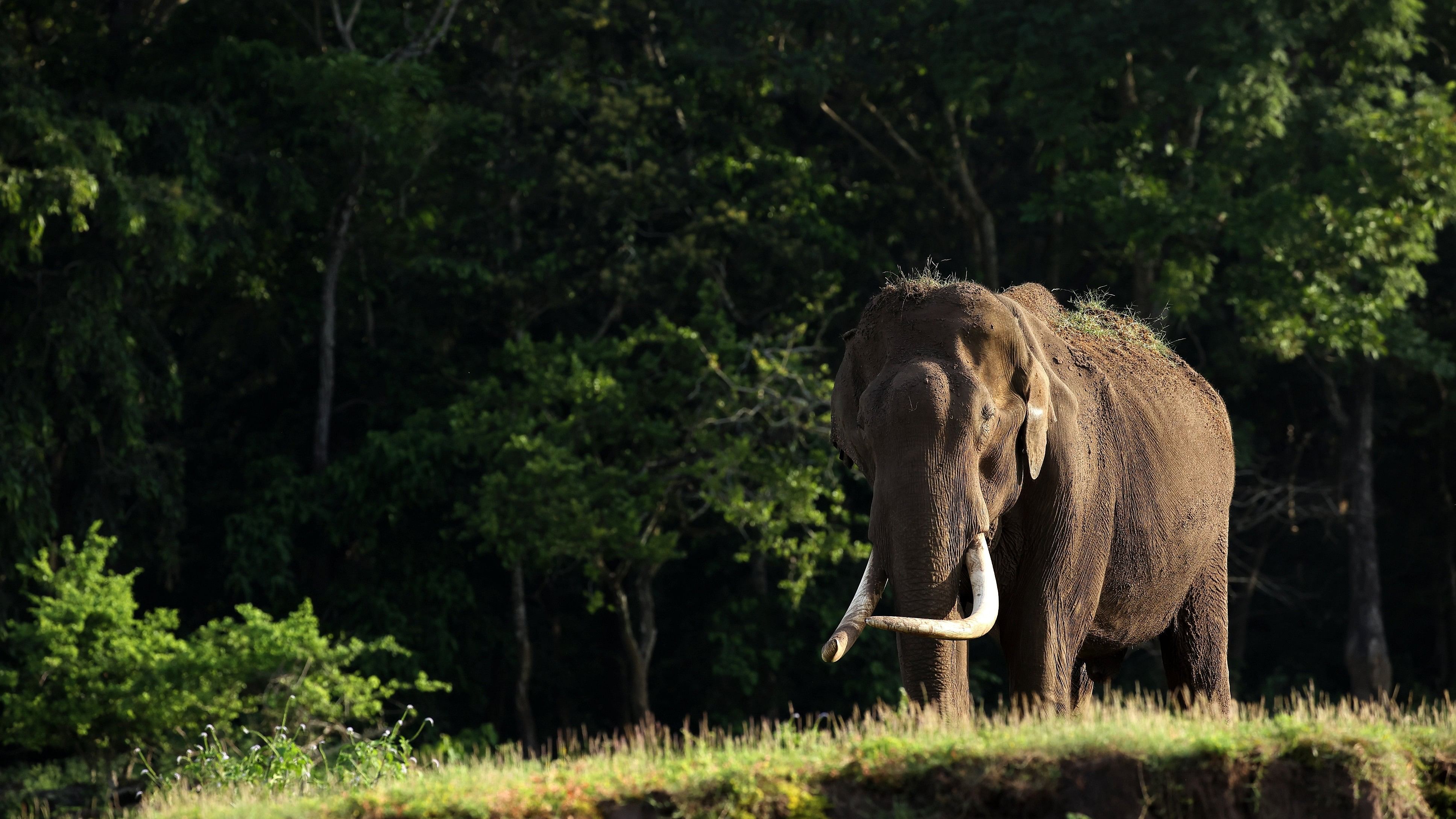
Credit: Vikram Nanjappa
Kabini has always attracted a host of visitors, from European and Indian royalty to the humblest of our race. However it is not only humans who find Kabini an attractive place to visit.
One of the best things about living in Kabini is that you never know who will land up at your doorstep. It was an absolute pleasure to have unexpected visitors from the animal kingdom turning up at the drop of a hat.
On another day, we had a visitor who had to be handled with utmost care! While we get many human visitors who need careful handling, this was a reptile — a Russell’s viper. He was found curled up in the corridor between the store and the kitchen. However, he was eventually discovered when he showed his displeasure at the frequent disturbances by hissing at a passerby. When disturbed, a Russell’s viper hisses loudly, like a pressure cooker, and only bites as a last resort. He was duly rescued by our snake rescue squad which by then had been augmented with the arrival of Vineeth – a man with a passion for them.
One evening, Vineeth and I were birdwatching near the resort when, in the fading light, we spotted a bunch of large birds not far from us whose colour and shape were unfamiliar. Intrigued and excited, I stopped to look through my binoculars: Seven bar-headed geese standing just a few yards away. This was the first time I had seen them in my life. I never expected to see them here in Kabini.
Bar-headed geese are migratory waterfowl that come during the winter to India. They fly across the high Himalayas to reach us. They have been recorded close to Mysore and in the Nugu backwaters, which are about 10 to 15 kilometres, as the crow flies from Kabini. However, I have never seen them in Kabini itself. Later, I was able to confirm that this was the first record of them here.
Mud and rain can sometimes work to your advantage. The advantage of wet mud from a naturalist’s point of view is that it is like the morning newspaper; all the events of the previous day can be read in it if you just take the trouble to look at it carefully.
I knew there was a leopard frequenting the village areas near the resort, as I had seen one some time ago. The leopard was very cautious and took great pains not to be seen, by restricting its activities to the night.
I suspected that it preferred to lie up in a secure spot during the day, and the bamboo grove near the village seemed to be the best place. A few months ago, I saw fresh tracks and followed them to the bamboo grove, where I found the remains of a dog.
One morning, as I was on my way to work, I happened to glance at the mud and was pleasantly surprised. There, in the fresh mud, were the pug marks of the leopard. This reconfirmed not only that the leopard was still around but was thriving as well.
It is not often that one is blessed with such a considerate neighbour who not only keeps his distance and takes care not to be a nuisance but also does his civic duty by keeping the stray dog population in check.
Have you ever been swamped by frogs? I mean, literally swamped by them in the thousands? Sounds creepy, huh? Well, it’s an annual affair in Kabini.
I am talking about the bi-coloured frogs that breed during the rains in June-July when large numbers gather around small tanks or slowflowing streams.
The tadpoles are distinct in that they move about like shoals of fish, shifting habitats from their place of birth until they metamorphose. Large shoals of tadpoles swimming close to the surface are a common sight in the Kabini River during that period. They then metamorphose into frogs, and large numbers can be spotted all over the river bank.
The baby frogs that emerge are rather large indeed. These ‘babies’ are sensitive to the sun and spend the day in the shade. As the days go by, they get more tolerant of the sun and start migrating in large groups farther into the forest, moving far from their nurseries. This is when they overrun the resort. They need to move fast because if they don’t find shade, they die of dehydration — literally dry up. The frogs are ‘citizens’ of the forest floor and only return to the water for breeding. During the breeding season, they move long distances to find a suitable habitat to breed.
During my time at Kabini, I witnessed many remarkable moments in the wild. None of them were out of the ordinary — in the sense that while they were remarkable to me, they were part of the daily routine in the wild.
(An excerpt from 'Kabini on my Mind: Musings of a Naturalist' by Vikram Nanjappa. The author is writing about his experience managing a resort in Kabini.)